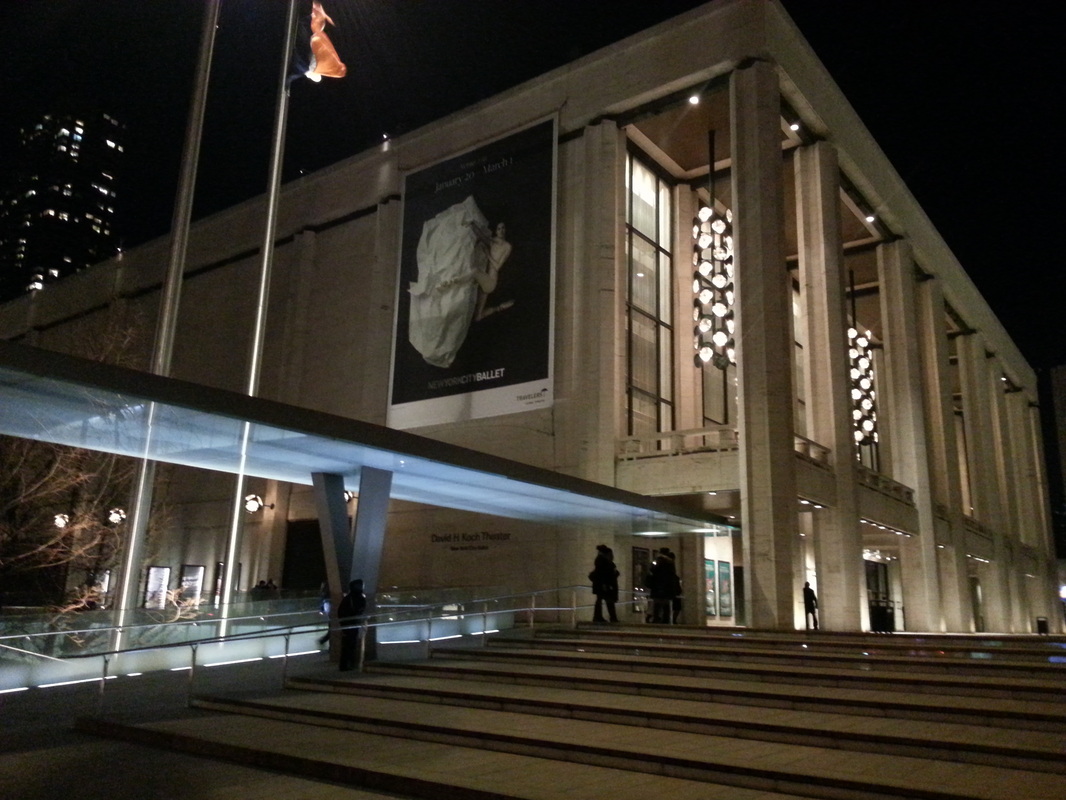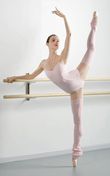The ballet opens with a sarabande theme—the jumping off point for all the musical variations—during which a couple clad in courtly dress dances a very simple, baroque pas de deux. This couple concludes their duet by bowing to a group of 6 principals and 12 corps dancers in pink-hued modern dancewear, who then take over the stage for the next 45 minutes. After the fifteenth variation, this group exits and a new group of six principals and 20 corps members in blue enters. In this second section the dancers add sartorial flounces with nearly every entrance: tutus, jackets, knickers, headpieces, and necklaces are piled on as the work progresses, and by the finale they are all wearing the baroque costumes of the original couple. The thirtieth and last variation, the quodlibet, ends with the cast bowing to the theme couple, who reenter in modern dress to reprise their steps to the aria da capo.
I danced a very little bit of the second section as an apprentice with the company, but I danced in the corps of the first section for many years and it was one of my favorite parts. Casting for the first section usually involves some of the younger soloists and senior corps, while casting for the second section is comprised of senior principals and younger corps. Thus the first section is more democratically structured and the second is strictly hierarchical. The first section is like Dances at a Gathering for the corps, and I think it is beloved by most of us who have danced it. My new role as the theme couple is odd, it doesn’t feel like part of either section, and I suppose it really isn’t. In that way it is an appropriate role for me right now, since I am coming back from an injury and I am both in the company but still apart until I can join in full-throttle. But I have enjoyed dancing the theme so far, and I have especially loved being back onstage in such a pretty dress, dancing to such pretty music. There is a lot to be said about Goldberg, I will delve more into this ballet in future posts.


 RSS Feed
RSS Feed